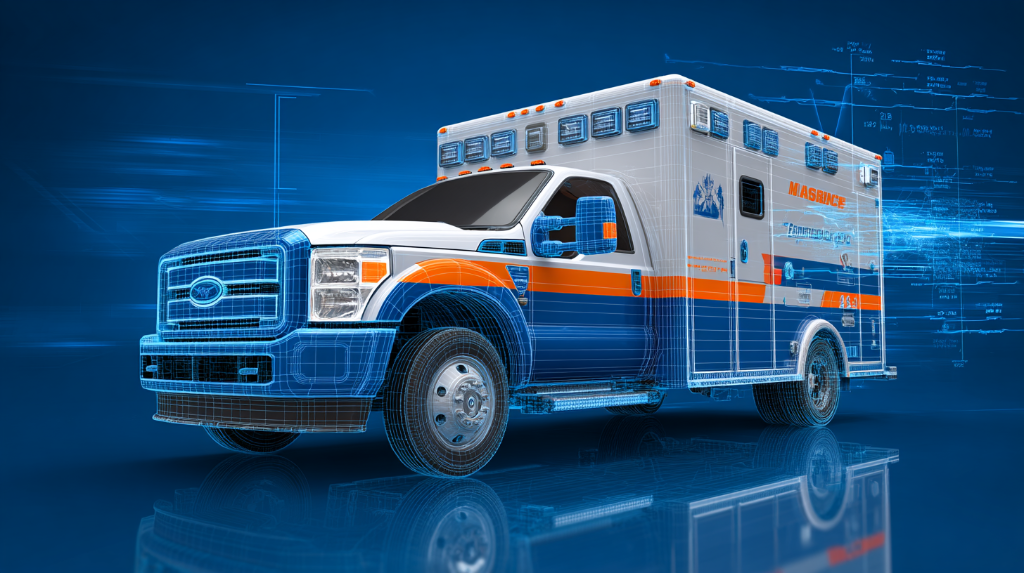Hire a Pre-Vetted Advanced EMT (AEMT)
Advanced EMTs (AEMTs) are vital in the Ambulance Services industry, providing crucial pre-hospital care. Hiring experienced and skilled AEMTs ensures better emergency response outcomes and enhances overall patient care, benefiting both organizations and communities.
Why Hire a Advanced EMT (AEMT)?
Hiring Advanced EMTs (AEMTs) is essential for organizations focused on high-quality patient care and operational efficiency. They bring advanced skills that enhance emergency medical services.
- Enhanced Patient Care: AEMTs are trained to provide advanced pre-hospital care, such as administering medications and performing advanced airway management. This capability leads to improved patient outcomes and satisfaction.
- Operational Efficiency: With their advanced training, AEMTs can handle complex medical situations effectively. This efficiency reduces response times and streamlines operations, ensuring that patients receive timely care.
- Cost-Effectiveness: Hiring AEMTs can reduce the need for higher-level medical staff in certain situations. This allows organizations to allocate resources efficiently while maintaining high standards of care.
- Flexibility in Response: AEMTs are skilled in adapting to various emergency scenarios, making them invaluable during peak demands or crises. Their flexibility alleviates pressure on frontline staff and improves service delivery.
- Experienced Team Building: By recruiting certified AEMTs, organizations can enhance their service delivery teams. Experienced AEMTs contribute to overall team effectiveness and morale, creating a supportive work environment.
What Are the Types of Advanced EMT (AEMT)?
- Trauma-Trained AEMTs: These specialists are equipped to handle traumatic injuries. They assess and manage patients effectively during emergencies, providing critical care until further medical help is available.
- Cardiac Care AEMTs: Focused on patients with heart conditions, these AEMTs manage cardiac emergencies with proficiency. They perform CPR and monitor vital signs, ensuring timely interventions.
- Pediatric AEMTs: Trained to work with pediatric patients, they understand age-specific medical needs. Their skills are crucial during emergencies involving children, providing tailored care in stressful situations.
- Community Paramedic AEMTs: They play a vital role in preventive care, assisting patients with chronic conditions. Their focus on education and follow-ups reduces emergency visits and promotes community health.
- AEMTs in Disaster Response: These individuals are prepared for large-scale emergencies, such as natural disasters. They can provide critical care amidst chaos, helping to mitigate harm during emergencies.
Where to Find Advanced EMT (AEMT)?
- Online Job Boards: They provide a broad platform to reach potential candidates. However, not all applicants are pre-vetted, which could increase hiring time and complexity.
- Staffing Agencies: These agencies specialize in healthcare placements, providing pre-vetted candidates quickly. They help organizations find qualified AEMTs without the extensive search process.
- Professional Networks: Engaging with local EMS organizations can help find qualified candidates. However, this approach may require significant networking effort and time.
- University Partnerships: Collaborating with training institutions may yield recent graduates. This option can be effective but may lack the experience needed for immediate placement.
What Are the Challenges Faced While Hiring Advanced EMT (AEMT)?
- Difficulty Assessing Skills: Evaluating technical skills accurately can be challenging during interviews. Without proper assessment, a candidate’s suitability remains uncertain, impacting care quality.
- Ensuring Cultural Fit: Assessing whether a candidate aligns with the organization’s values and culture can be tricky. A poor cultural fit may lead to staff turnover and decreased morale.
- Managing High Turnover Rates: The EMS industry often faces high turnover, making it hard to maintain a stable staff. Building a reliable team requires effective recruitment and retention strategies.
- Certification Verification: Ensuring that all certifications are accurate and current requires diligence. Misrepresentation of qualifications can lead to compliance issues and affect patient care.
- Training Gaps: Some candidates may lack the recent training needed for advanced techniques. This gap could result in a longer learning curve and potential challenges during emergencies.
What Qualifications and Licenses Must a Advanced EMT (AEMT) Have?
- High School Diploma/GED: This is the foundational requirement. A diploma or equivalent ensures that candidates have basic education vital for further training.
- Current AEMT Certification: Valid certification confirms that the candidate has completed advanced training. It is critical for ensuring they can perform necessary procedures in emergencies.
- CPR and First Aid Certifications: These certifications are essential for all EMTs. They prepare candidates to handle life-threatening situations effectively and quickly.
- Hands-on Experience: Typically, organizations prefer candidates with experience in emergency settings. This experience is vital for confident and competent performance in real-world scenarios.
- Specialized Training Courses: Additional training in trauma care, pediatrics, or cardiac emergencies enhances an AEMT’s skills. This training aligns with evolving industry standards and patient needs.
Sample Advanced EMT (AEMT) Job Description
Job Overview: An Advanced EMT provides essential pre-hospital care and emergency response support. They assess patient conditions and administer treatments during transport.
Key Responsibilities: Include assessing patients, performing advanced life support techniques, and collaborating with medical personnel.
Required Skills: Strong communication, quick decision-making, and proficiency in emergency medical techniques are essential.
Qualifications: Candidates must possess valid AEMT certification and CPR training, along with hands-on experience in emergency situations.
Advanced EMT (AEMT) Interview Questions: What to Ask Advanced EMT (AEMT) at the Interview
- Can you describe a time when you handled a high-pressure situation? This question assesses decision-making and stress management skills in emergencies.
- What advanced techniques are you trained in? Identifying specific skills gives insight into the candidate’s qualifications and suitability for the role.
- How do you prioritize tasks in an emergency? Understanding their thought process reveals their ability to manage critical situations effectively.
- What steps do you take to maintain patient comfort? This question explores their patient-centered care approach, which is crucial in emergency medicine.
- How do you stay current on EMS trends and practices? This reveals their commitment to ongoing education and adapting to industry changes.
When Should I Hire a Advanced EMT (AEMT)?
Hiring an Advanced EMT (AEMT) is essential during peak demand periods, such as emergency surges or personal leave of existing staff. Organizations expanding services may also need AEMTs to fill critical skill gaps. Moreover, hiring skilled AEMTs ensures that team capabilities align with public health needs, leading to better outcomes.
How Can I Test Advanced EMT (AEMT) Skills?
- Conduct Role-Specific Assessments: Create scenarios that mimic real-life emergencies to assess practical skills. This testing method reveals how candidates react under pressure.
- Assign Real-World Tasks: Give candidates tasks they would encounter on the job. This approach helps evaluate their expertise and confidence in performing essential EMT duties.
- Review Past Project Outcomes: Discuss previous experiences and results with candidates. Analyzing their history helps understand their decision-making and impact on patient care.
- Utilize Simulation Training: Implement high-fidelity simulations to test clinical skills. Simulated environments provide an opportunity to observe teamwork and technical abilities.
How to Conduct an Effective Cultural Fit Assessment for Advanced EMT (AEMT)?
- Ask Situational Questions: Inquire how candidates would respond to team conflicts or high-stress situations. Responses indicate their values and compatibility with the organization.
- Review Alignment with Company Values: Discuss core values with candidates to assess their fit. This discussion clarifies expectations and fosters understanding from the start.
- Involve Team Members in the Interview Process: Allow team members to assess candidates. Their input ensures the new hire will integrate well with existing personnel and dynamics.
- Observe Communication Styles: Pay attention to how candidates communicate during interviews. Effective communication is crucial for cultural fit and teamwork in emergency settings.
What Is the Average Salary of a Advanced EMT (AEMT) in the US?
The average salary for Advanced EMTs (AEMTs) in the U.S. ranges between $35,000 and $57,000, depending on experience and location. Areas with higher living costs or demand for emergency services often offer higher salaries. Trends indicate competitive pay in metropolitan regions, reflecting the importance of AEMTs in ensuring public health and safety.
What Are Some Advanced EMT (AEMT)-Specific SOPs, and How to Create Them?
- Emergency Response Protocol: This SOP outlines specific steps for various emergencies. It ensures that all EMTs follow consistent procedures, enhancing patient care and safety.
- Patient Transfer Guidelines: These guidelines define how to transfer patients between facilities. They ensure efficient communication and continuity of care during transitions.
- Medication Administration Procedures: This SOP details safe practices for administering medications. It assists in minimizing errors and maintaining compliance with healthcare standards.
- Incident Reporting System: This procedure establishes protocols for documenting and reviewing incidents. Proper reporting enhances understanding, safety, and compliance in emergency response situations.
How to Retain Advanced EMT (AEMT) Effectively?
- Offer Competitive Benefits: Providing attractive benefits improves job satisfaction. Benefits such as health insurance and retirement plans encourage employee loyalty and retention.
- Foster a Supportive Work Environment: Create a positive culture that values contributions. A supportive atmosphere leads to higher morale and staff commitment.
- Provide Professional Development Opportunities: Offering training and advancement opportunities keeps staff engaged and motivated. Continuous learning helps employees stay current in their field.
- Encourage Open Communication: Facilitate regular check-ins and feedback sessions. Open communication builds trust and enables swift resolution of issues, contributing to a happier workforce.
Hire Advanced EMT (AEMT) with Pulivarthi Group
Partner with Pulivarthi Group to hire skilled, pre-vetted Advanced EMTs (AEMTs) efficiently. Our expertise in emergency response staffing ensures that your business receives qualified candidates tailored to your needs. With a focus on cost-effectiveness and quality, we’re committed to helping you achieve your goals and provide the best care possible.






